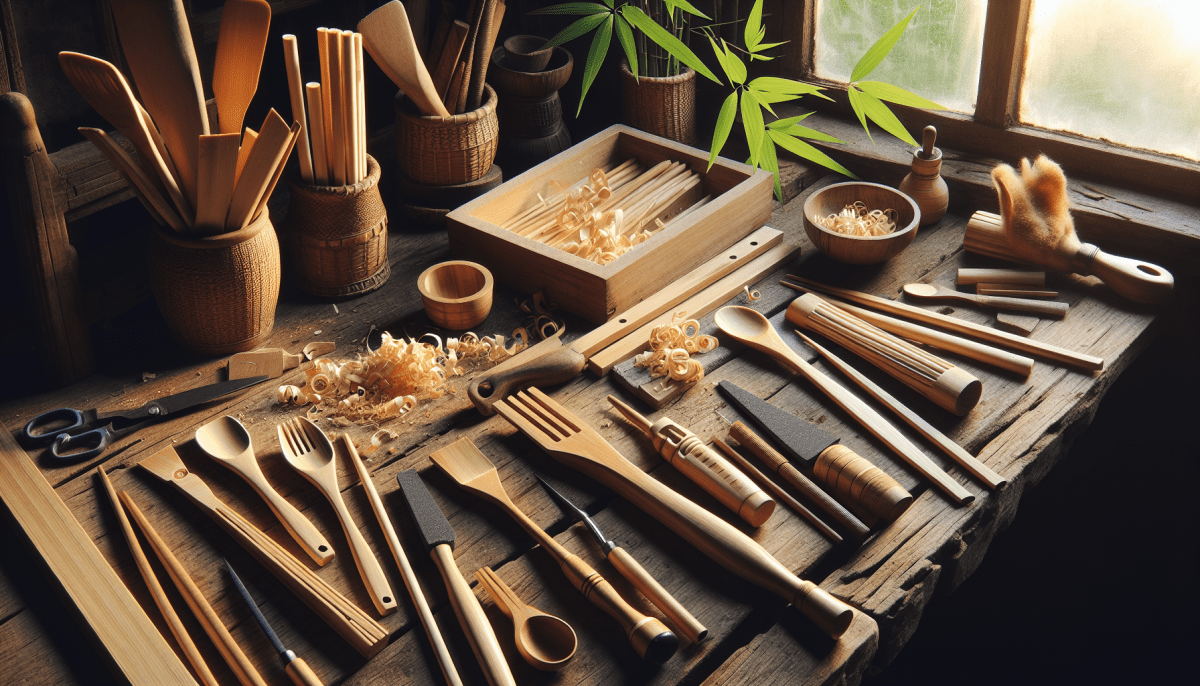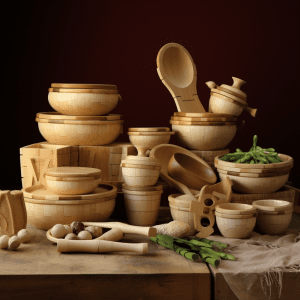Bamboo is an incredibly versatile and sustainable material that is gaining popularity in the kitchen tool industry. Its natural strength and durability make it an excellent choice for DIY enthusiasts who are looking to create their own bamboo kitchen tools. However, with so many different types of bamboo available, it can be overwhelming to know which one to choose. This primer will provide beginners with some essential information to help them select the right bamboo for their DIY projects.
One important factor to consider when choosing bamboo is the species. There are over 1,000 species of bamboo, each with its own unique characteristics. For kitchen tools, it is recommended to use Moso bamboo (Phyllostachys edulis) as it is known for its strength and is a popular choice for cutting boards, utensils, and other kitchen items. Moso bamboo grows in various regions including China, Japan, and Korea, making it widely accessible.
Another important aspect to consider is the age of the bamboo. Bamboo is harvested at different ages, which affects its density and strength. Young bamboo, typically between 3 to 5 years old, is less dense and suitable for lightweight kitchen tools like spatulas or chopsticks. Older bamboo, aged 5 to 7 years or more, is denser and better suited for heavier items such as cutting boards or rolling pins.
Additionally, it is crucial to select bamboo that has been properly treated and cured to ensure its durability and resistance to mold or pests. Untreated bamboo is vulnerable to moisture and may warp or crack over time. Look for bamboo that has been kiln-dried or heat-treated, as these processes remove moisture and strengthen the material, making it more resilient in the kitchen environment.
From Raw Bamboo to Ready-to-Use Tools: Step-by-Step Guide
Welcome to our step-by-step guide on creating bamboo kitchen tools! Bamboo is a versatile and sustainable material that can be transformed into beautiful and functional kitchen utensils. In this guide, we will take you through the process of turning raw bamboo into ready-to-use tools for your culinary adventures.
Step 1: Gathering and Preparing Bamboo
The first step in creating bamboo kitchen tools is to gather fresh bamboo stalks. Look for mature stalks that are at least 2-3 years old, as the older bamboo is stronger and more durable. Once you have gathered the bamboo, it's time to remove the outer skin and any rough edges. Use a knife to carefully cut away the skin, taking care to create smooth surfaces.
Step 2: Cutting and Shaping
Next, measure and mark the desired length for your kitchen tools on the bamboo stalk. Using a saw, carefully cut the bamboo at the marked points. Once you have cut the desired length, shape the ends of the bamboo pieces according to the type of tool you are creating. For example, if you are making a bamboo spatula, shape one end into a flat, wide surface.
Step 3: Smoothing and Finishing
To ensure a comfortable grip and a polished final look, it's important to smooth and finish the bamboo. Use sandpaper to smooth the surfaces and edges of your tools. Start with coarse-grit sandpaper and gradually move to finer-grit paper for a smoother finish. Once the bamboo is smooth, you can apply a food-safe oil or wax finish to enhance its durability and protect it from moisture.
Step 4: Final Touches
Lastly, inspect your bamboo kitchen tools for any rough spots or imperfections. Use sandpaper to gently sand away any remaining roughness. Feel free to add your personal touch by decorating your tools with non-toxic paint or by engraving patterns into the bamboo. Once you are satisfied with the final touches, your bamboo kitchen tools are ready to use!
Essential Tools and Techniques for Bamboo Crafting
Bamboo crafting is a versatile and sustainable way to create your own kitchen tools. Whether you're a woodworking enthusiast or simply looking for a unique DIY project, working with bamboo offers a variety of possibilities. However, it's crucial to have the right tools and techniques to ensure the success of your bamboo crafting endeavor.
1. Bamboo Cutting Tools:
One of the most essential tools for bamboo crafting is a sharp bamboo cutting tool. This tool is specifically designed to slice through the sturdy bamboo stalks easily and smoothly. Look for a good quality bamboo cutting tool that is durable and comfortable to hold. With a sharp bamboo cutting tool, you'll be able to shape and cut bamboo stalks effortlessly, allowing you to create precise and well-crafted kitchen tools.
2. Sanding and Polishing:
Sanding and polishing are vital techniques in bamboo crafting that ensure a smooth and finished look for your kitchen tools. Use sandpaper with varying degrees of coarseness to smooth out rough edges and surfaces. Once the desired smoothness is achieved, you can apply a food-safe wood polish to enhance the appearance of your bamboo kitchen tools. Proper sanding and polishing will not only improve the aesthetic appeal but also protect the bamboo from moisture and potential damage.
3. Joinery and Assembly:
When creating complex kitchen tools like bamboo cutting boards or utensils, mastering joinery techniques is crucial. By using effective joinery methods such as dowel joints or mortise and tenon joints, you can ensure the durability and stability of your bamboo creations. Take time to practice these techniques and choose the most suitable joinery method for your specific project. Properly assembled bamboo kitchen tools will be long-lasting and withstand regular use in the kitchen.
Finishing Touches: Staining and Sealing Bamboo Kitchen Tools
Once you have completed the main construction of your bamboo kitchen tools, such as cutting boards, spatulas, or utensils, it's time to give them the finishing touches. Staining and sealing are essential steps to enhance the durability, appearance, and longevity of your handcrafted tools. In this section, we will guide you through the process of staining and sealing your bamboo kitchen tools.
Before you begin staining, it is important to note that not all bamboo tools require staining. Bamboo already has a naturally beautiful and light color, which many people appreciate. If you prefer to enhance the natural color, you can skip the staining step altogether. However, if you prefer a darker or different hue, staining can add a unique touch to your kitchen tools.
To stain your bamboo kitchen tools, start by selecting a stain color that complements your kitchen decor and personal taste. Apply the stain evenly using a clean cloth or sponge in the direction of the bamboo grain. Be sure to coat all sides of your tools and let them dry completely. Do note that multiple coats may be necessary to achieve your desired color, so allow each coat to dry before applying the next.
After the staining process, the final step is to seal your bamboo kitchen tools. Sealing helps protect the bamboo from moisture, stains, and heat, ensuring its longevity. You can use a food-safe, natural oil-based sealant or a beeswax and mineral oil mixture to seal the bamboo. Apply the sealant evenly using a clean cloth or brush, covering all surfaces of your tools. Allow the sealant to soak in and dry as per the manufacturer's instructions, and repeat the process if necessary.
4.38 out of 5 starsBamboo Cookware
Sustainable and Stylish Cookware to Elevate Your Kitchen Experience
Product information
Product Review Score
Product links



